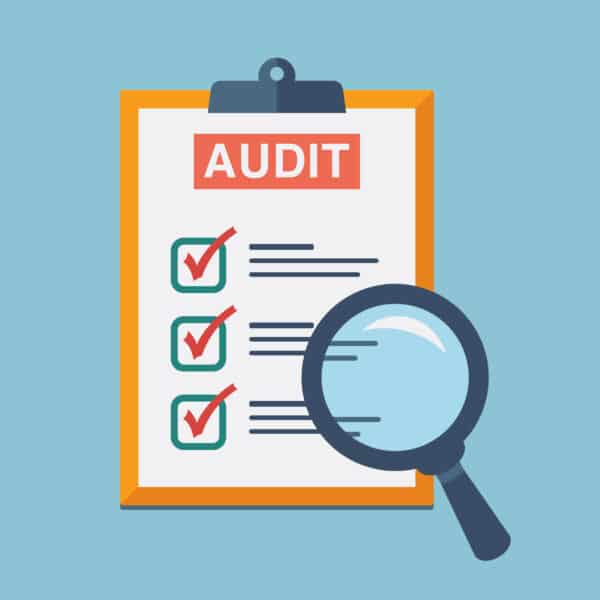How A Content Audit Will Tell You If It’s Time For A Reboot


By The BBS Agency
August 1, 2022
A good content strategy should apply to both what you’re going to say in the future as well as what you’ve said in the past. As entrepreneur coach Dan Sullivan says, a “new capability creates confidence ahead of it, but it also rearranges everything behind it,” and any jump in capability “automatically transforms both the past and the future.” If that means it sounds like it’s time for a content audit, it probably is. Performing a content audit can help you decide which stories you should reboot, and what new stories you should tell. If you have an old blog post that doesn’t see much traction but would be relevant in a new context, recreate it. If you have old stories that are just outdated, feel free to delete them. If you have a story line that works well, recreate it with new characters or from a new perspective. And don’t forget to include your audience in the content reboot decision making process. If you have any questions about how to perform a content audit or want us to handle it for you, reach out to us at Prebuilt Sites or The BBS Agency. We’d love to help you out!
A great content strategy doesn’t apply only to what you’re going to say. It also should shape and change what you’ve said in the past.
In The 4 C’s Formula: Your Building Blocks of Growth, entrepreneur coach Dan Sullivan talks about acquiring new capabilities (one of the titular 4 C’s). He wrote that a “new capability creates confidence ahead of it, but it also rearranges everything behind it,” and any jump in capability “automatically transforms both the past and the future.”
I love his idea that new capabilities give us new insights into how we acquired our existing capabilities. Essentially, he’s saying these new perspectives let us change the past.
They let us reboot our origin story – and all the other stories we tell.
For example, I’ve worked to refine my ability to take visionary yet esoteric ideas and help people break them down into workable, pragmatic plans. As I’ve improved at that capability, I’ve developed a new understanding of my past self. And that lets me reevaluate (and rewrite the stories of) the good and bad decisions I’ve made.
Applying these new perspectives to the past is easier than projecting them to the future. Research shows that people feel disassociated from who they believe they’ll become in the future.
They even discount their existing capabilities when looking through the lens of their future selves. It’s as if we see our future selves as someone else.
You can reshape content for the future – and from the past
One of the most productive things you can do for your brand is to review the content your brand leaves in its wake. As you acquire new content capabilities, advance your story, and change your points of view, you’ll naturally evolve what your brand will say.
Take the opportunity to evolve what you’ve already said, too.
Does it sound like I’m suggesting you need a content audit? Well, you probably do.
Whenever I suggest an audit to a content or marketing team, exactly zero people volunteer to take it on. “Yay, let’s do another content audit!” said no one ever.
That’s understandable. A content audit requires a manual review of hundreds, thousands, or tens of thousands of assets to find ROTted (redundant, outdated, or trivial) content.
Someone must decide which assets to keep, which to change, and which to delete. Concerns over duplication, SEO, and old branding or outdated designs typically drive the decisions.
Inspiring? Not particularly.
But reviewing past content through the lens of your new capabilities makes this tedious task much more interesting.
That outdated white paper? How might you reimagine it knowing what you know now?
What about those amazing articles someone created years ago that were never promoted and thus never got traction? Why not reproduce them in your new template and promote them?
That series of webinars you did with a partner that later became a competitor? Feel free to delete them all.
In other words, what insight do you have now that changes how you see the content you created?
Don’t only reshape your future. Change the context of the past.
How to decide what to reboot
I once had the privilege of talking with an extraordinary woman who handles investment strategy for consumer and entertainment media brands. She shared something the head of Marvel Studios told her about how they balance origin stories with the need to reboot popular hero arcs. (How many times have we seen the Spiderman origin story told in slightly different ways?)
Marvel sees new origin stories as a critical factor in keeping a story “alive” and relevant to new and different audiences. Audiences sometimes interpret these new stories as playing to the cultural zeitgeist (Black Panther and Ms. Marvel come to mind).
But the Marvel team doesn’t think of them or design them that way, she said.
Instead, Marvel considers rebooting origin stories as a form of co-creation with fans. They look at (and solicit, when possible) feedback from their most passionate audiences to understand when and how a reboot might be necessary or timely.
This is a great lesson.
Before you attempt that content audit, look to your fans to help you understand how to reshape your brand story.
Think about who will co-create with you. Who are your passionate fans? Who knows your mythology –your journey – so well that they’d know when, how, and where a reboot would be appropriate? Who knows Rey stole the Jedi texts and put them on the Millennium Falcon? Find the people who know the equivalent of that detail from your brand stories.
Gather with them. Listen to them. You don’t have to act on everything. They’re still your brand’s stories, after all.
But fans can help you reboot your stories at the right time.
In the past, old content wouldn’t survive. The physical space needed to store it and the time and effort required to reprint, reshoot, or otherwise recreate it meant that most old content got destroyed or became inaccessible.
Digital content changed all that. Now, it’s possible to keep everything. And it’s sometimes more expensive to address it at all. That’s why websites are bloated, blogs go back decades, and document repositories remain unorganized.
But that doesn’t mean they should stay that way.
As content practitioners, you’re creating the artifacts of your future every day. Treat them with the respect future treasures deserve.
But don’t forget to seize the opportunity to reshape past stories, too.
